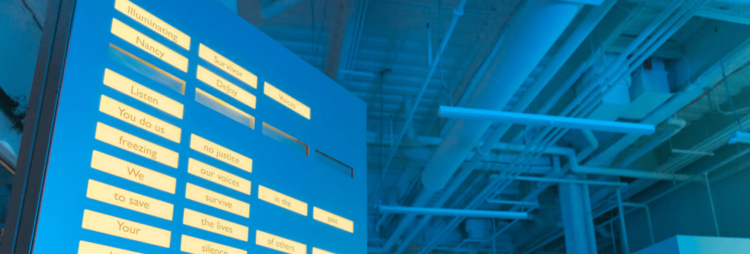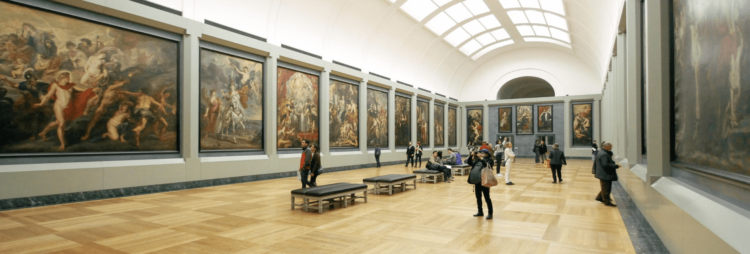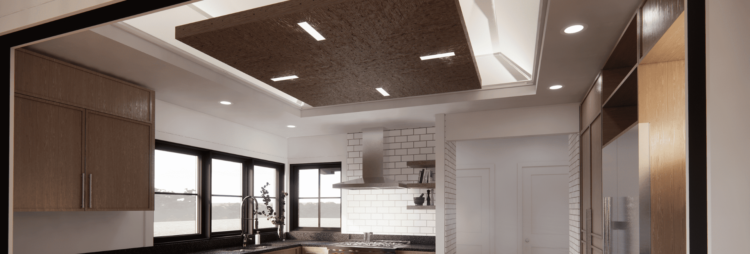
By the OLED UX Team
Happy Anniversary! The American Institute of Architects (AIA) Rochester chapter is celebrating 100 years. This milestone has been marked by a year-long slate of festive events that showcase the world of architecture and the creativity of our local designers.
The most recent of these events was the annual fashion show, Runway to Rochester, where AIA enriched the evening with a playful reflection of local architectural icons, re-imagined as costumes.
Designing a Dress With Light
Clothes may make the man, but in this case, buildings make the clothes! Participating firms created outfits and walked the runway, kicking off the evening with great fanfare. Costumes were fun, outrageous, colorful and bold – evoking structure, humor, and a spirited use of materials essential to architecture, but not typically found in everyday clothing.
Hunt EAS, a full- service engineering and architectural firm took its inspiration from the Susan B. Anthony/Frederick Douglass bridge in the heart of Rochester. The bridge boasts lighting along the steel archway.
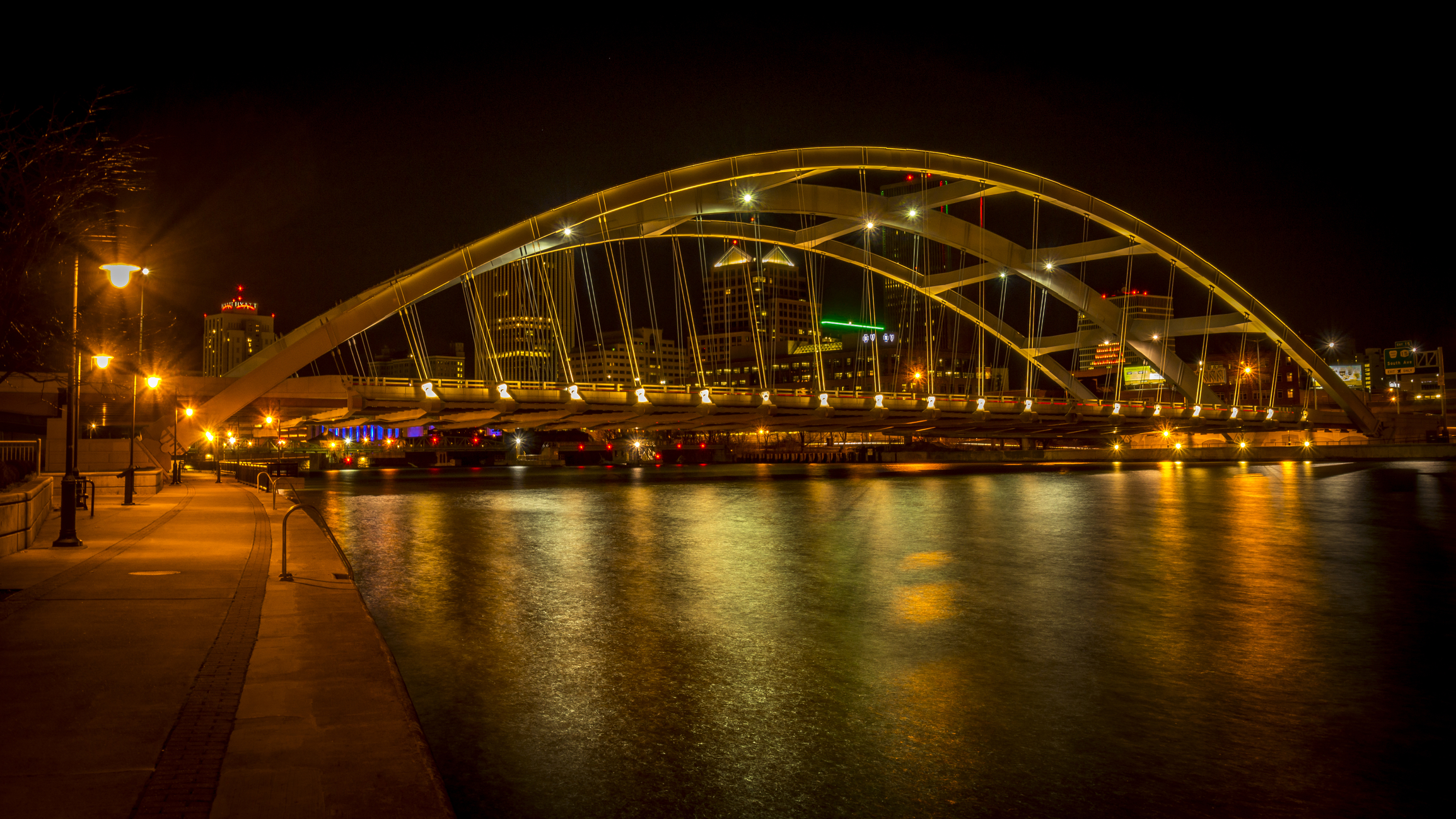
Susan B. Anthony/Frederick Douglass Bridge in Rochester, NY
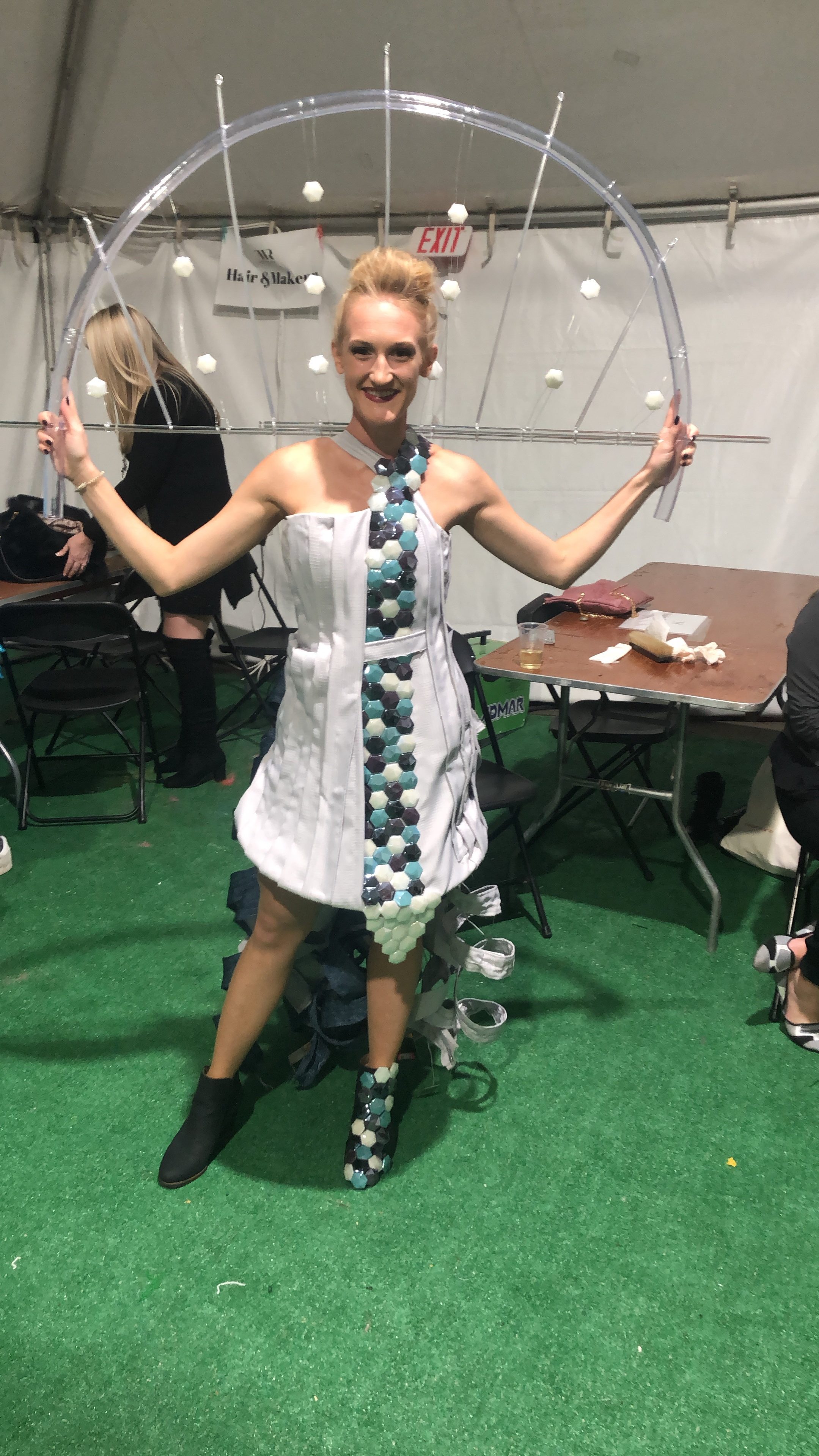
Christine Checho, modeling Hunt dress with OLEDWorks panels laced between fabric in the train
In this vein, Hunt incorporated OLED light panels into their design taking advantage of the “ready to wear” OLED features:
- The cooler temperature of OLED panels allow them to be directly integrated with a wide range of materials including textiles, wood, and even paper. The Hunt designers played with a number of ideas including back lighting sheets of tile – a dichotomy of lightweight and heft for a unique look.
- Since OLEDs don’t get hot, they can be used in proximity of people – not only are they safe to touch, but the direct lighting is soft. Two compelling reasons for your light to be your light.
- OLED’s thin form factor is readily incorporated into slimline designs without compromising sleekness or elegance. Hunt laced OLED panels between sheer fabric strips – a millimeter thick ribbon beaming with lights.
- Easy to integrate. The Hunt team pulled low voltage (24VDC) wires to a small power source, set to the required current. This low voltage, low cost wiring can provide an advantage in building integration as well.
- Supports the design intent, works with the other materials in the system for a comprehensive experience and reliable function.
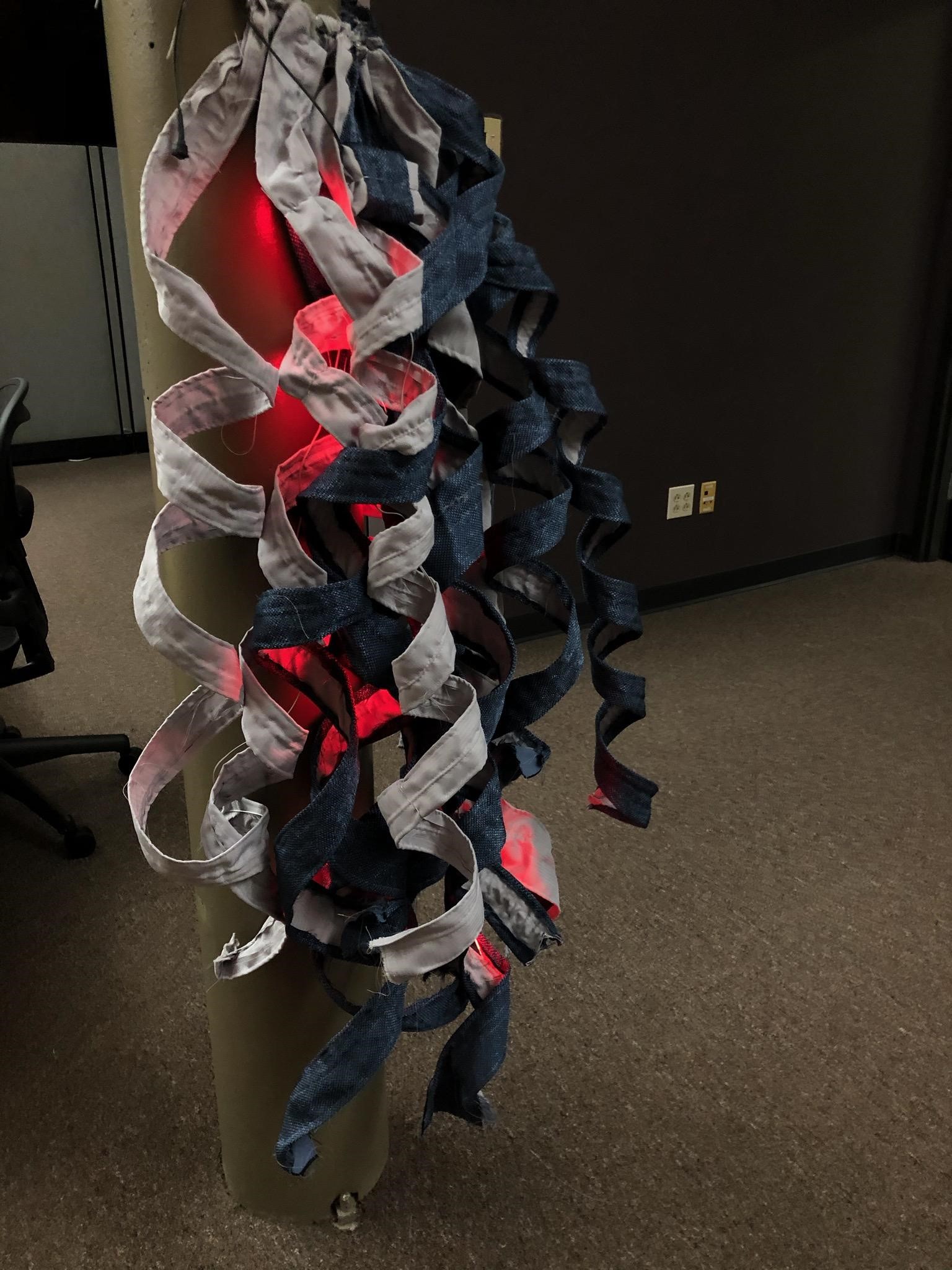
The train of Hunt’s dress, laced with OLED panels between thin layers of fabric
Alex Wiedemer, AIA Associate at Hunt shares his excitement about the ease of integrating OLEDs into their runway design:
“Having been assigned fabric from Drapery Industries and ceramic tiles from Creative Materials Corp., we developed a “dress train” concept that sort of begged for light filtration – with an expectation that the runway stage lighting would have to suffice. So we jumped at the opportunity when OLEDWorks offered us panels to produce our own light by weaving their slim, cool, and “brilliant” lights into the train. We now had our mobile light display!”
Defining a Space: The Marriage of Light and Architecture
Architecture and lighting work together, and it is critical that they do so. Lighting as an afterthought to building and space design can limit the intent of the architect or interior designer – poor color rendering, lack of expression of space utility, absence of sense of community. Light working with building design reinforces the intent and function of the space, creates a sense of safety, is inviting, promotes productivity, and more. Hunt’s exploration of light and materials as an integral part of design is a small portrayal of the value of light and architecture working as one.
But it is not just the defined space that is enhanced by light. Elements within the space can also augment experience with light – defining personal space, integrating into portable and reconfigurable components, or creating a sense of how to move through an area. Without the need for bulky heatsinks, the combination of low temperature and slim profile position OLED lighting for integration into wooden, plastic, metal, you-name-it furniture, office wall or cubicle dividers ranging from glass to textile finishes, retail shelving, and the list goes on. And now, with Runway to Rochester, OLED lights have found a potential new home for the future: clothing!
Join us in congratulating AIA Rochester on 100 years. They are wearing it well!
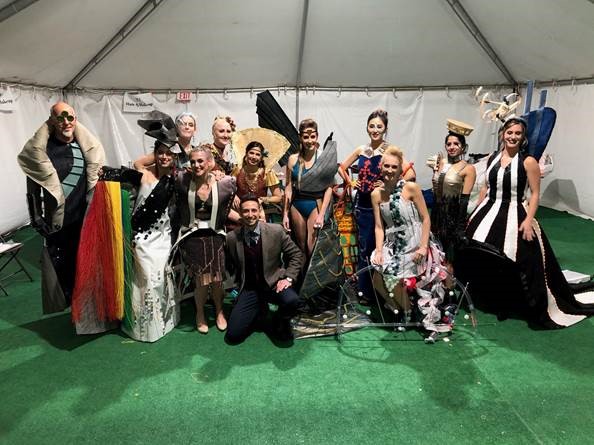
Runway to Rochester AIA Models and Designs


